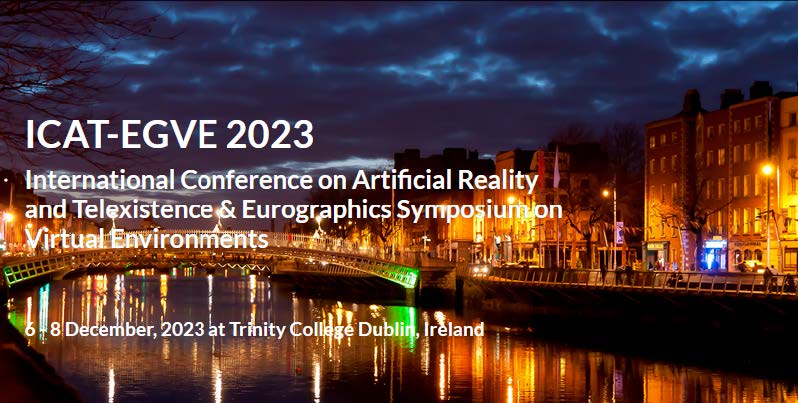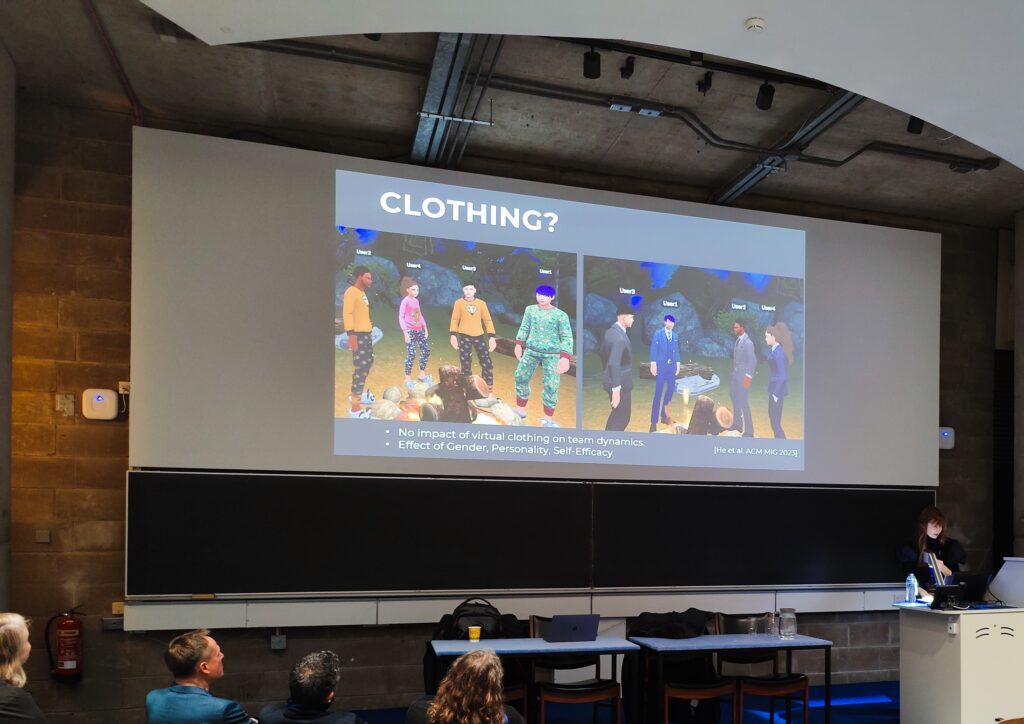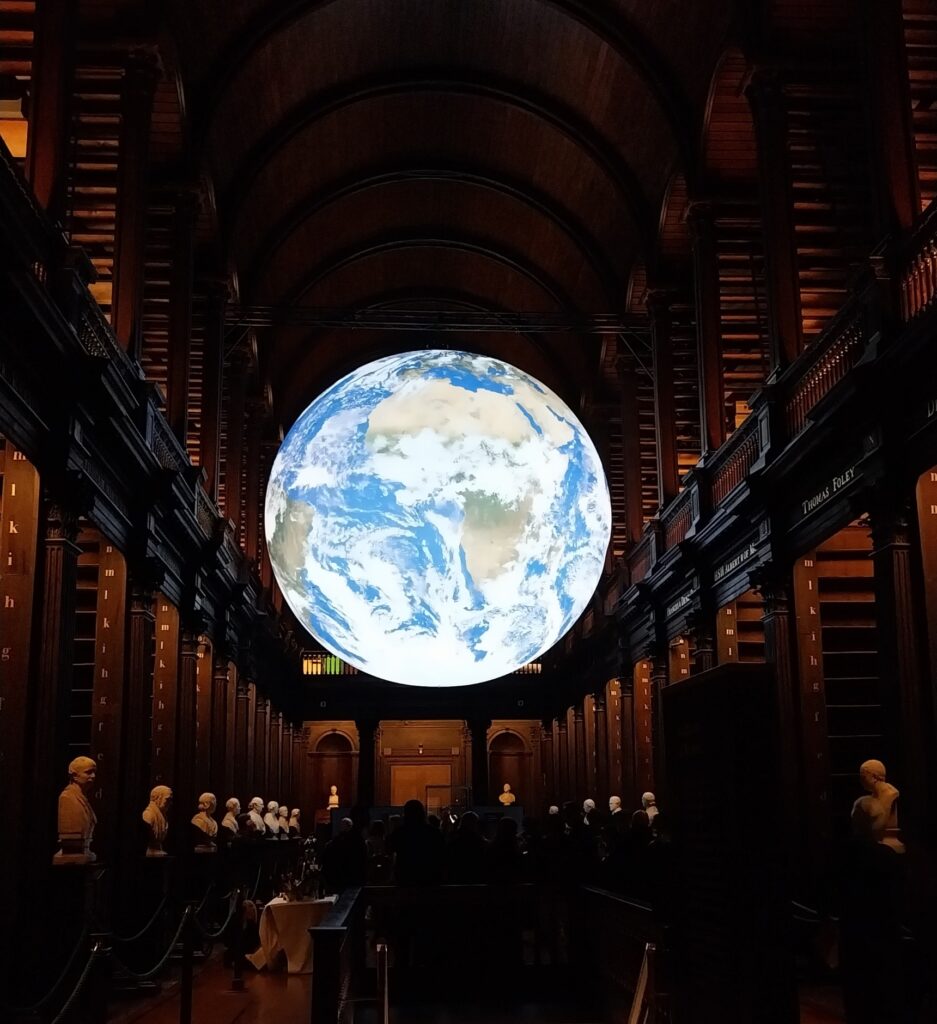From December 6th to December 8th, 2023, the ICAT-EGVE, a merger of two of the oldest international conferences in the world on Artificial Reality and Virtual Environments took place.

Hosted by the Trinity College, this year’s conference welcomed attendees from a range of different countries which were as diverse as the presented research. As this was the first conference for me, I was especially delighted to be able to present my project on behalf of our group, the chair for Life Science Informatics at the University of Konstanz. As this conference was a smaller one, the program had been straightforward: one keynote talk per day, accompanied by paper presentations.

was, whether it makes a difference in interaction in a team if they wear pyjamas
or suits. Image: Wilhelm Kerle-Malcharek
The first keynote speaker was Rachel McDonnell, a Trinity Professor, who mainly spoke about the perception of virtual human and non-human appearances and how they can affect social interactions in VR with partly weird experiments. The second keynote speaker was Aljosa Smolic from Luzern University, who showed us how well the digitilisation of non-moving and moving objects and dancers (generally people) has developed. The third and last keynote was presented by of Kenny Mitchell from Edinburgh Napier University. He told us about his first-hand experience from working for Disney Research Groups and how being a major contributor to Roblox came to be his huge milestone. It was overall a great lineup.
On the second day we had a poster session, which had been fun due to a number of XR demos that belonged to the respective posters. The poster session did not only give us a chance to further actively discuss the research of one another, but also gave us an opportunity to network. Of course, this process got easier due to the first evening, where we got to eat, drink and dance together at the Market Bar in Fade Street. This was also the first time I saw Trinity up close so I was already astonished by its beautiful architecture. However, the main conference reception managed to top that. It took place on the second evening and we were invited to the old library (without tourists), with harp music and an art installation called ”Gaia”.

old library, Trinity College. Image: Wilhelm Kerle-Malcharek
In general, it can be said that the conference on Artificial Reality and Virtual Environments has been a great occasion for networking due to its sincere atmosphere and diverse research directions. Trinity as a host offers a beautiful venue, too and I am grateful that I had the possibility to experience those three days at ICAT-EGVE.

